- Total Pharmacy® June 2025
- Volume 03
- Issue 03
Direct-to-Consumer Pharmacies: Why Skipping the Counter Puts Patients at Risk
Direct-to-consumer drug sales may undermine patient care and threaten independent pharmacies by reducing access to personalized, comprehensive medication management.
The uptick in pharmaceutical companies selling their medications directly to consumers, such as Pfizer Inc,1 Eli Lilly and Company2 and Novo Nordisk Inc,3 may be compromising the patient’s overall health. This may be especially true in the diabetes and obesity treatment spaces.
"I'm sure these manufacturers are feeling pinched by retail independent and compounding pharmacies that are cutting into their product line distribution,” said Carter High, PharmD, co-owner of Best Value Pharmacies, in Fort Worth, Texas, and a past president of the Texas Pharmacy Association. “Selling direct is an avenue for manufacturers to negate the lack of sales they are incurring from the compounded models for some of the products that they produce, such as the weight-loss GLP-1 [glucagon-like peptide-1] injectables.”
High said there is a general concern among independent pharmacies “anytime an outside entity is able to outmaneuver an independent pharmacist on some of these products when you have a lot of factors working against such a pharmacy, like mine, to supply products to patients at an affordable rate and with personalized service.”
High noted that the FDA’s October 2024 and February 2025 removal of the 2 GLP-1 injectables tirzepatide4 and semaglutide,5 respectively, from its drug shortage list “is probably due to some very good negotiations by the manufacturers, suggesting those products are not in shortage due to the loss of market share they have incurred; rather, the compounding pharmacies and other entities are able to make these products cheaper and more efficiently.”
READ MORE:
These outside influences will negatively affect a pharmacy’s bottom line, according to High. Some pharmacies may now be stocking some products that manufacturers are offering direct as a method to “keep their books in the black. If [they] no longer stock these products, this can be a scary feeling for independent pharmacies,” High said.
High said that he believes direct-to-consumer drug sales are not advantageous for patients. “I think a lot of these products are very complex. Although these manufacturers have robust mechanisms in place to allow a patient to call in and ask questions, the patient is missing out on the personalized care that the community retail pharmacist can provide at the same cost,” he explained.
High said that, overall, he feels that direct-to-consumer models further damage the community pharmacy that is embedded in a geographic area. “These models erode the pharmacy’s ability to financially stay solvent in an already saturated market,” he said. “This will cause a bigger downstream problem for a few set of goods, when a pharmacy may rely on those goods to keep the doors open....Pharmacies need that revenue share to be able to operate so they can provide direct services to patients in the communities they serve.”
Sharon Gatewood, PharmD, BCACP, FAPhA, a professor of pharmacy at Virginia Commonwealth University School of Pharmacy in Richmond, Virginia, said she believes that direct-to-consumer models also will have a negative impact on treating diabetes.
“You are not going to have as much of that one-on-one, working with both the pharmacist and the provider and building those relationships,” Gatewood said. “I think it is going to make it difficult for patients because they don’t know what they don’t know.”
She noted that patients with diabetes often only consider the medication and overlook the importance of the overall management of the disease, including behavioral, dietary, and nonpharmacologic strategies.
Direct-to-consumer models for diabetes medications also create reimbursement problems for independent pharmacies. “Pharmacy reimbursement is really bad across the country,” Gatewood said. “Independent pharmacies don’t have as much overhead and don’t have as much negotiation power."
However, she concedes that easy access, depending on where the patient lives, is a benefit of direct-to-consumer models because “there are some pharmacy deserts popping up.” Overall, though, Gatewood said the negatives of direct-to-consumer drug sales for patients with diabetes outweigh the positives.
Gatewood said that the pros and cons of direct-to-consumer models for obesity are similar to diabetes. “Once again, you’re dealing with a chronic condition that, yes, medicine can help treat, but you’re not looking at the person as a whole and you’re not looking at the condition as a whole. There are other [components to a treatment plan] that are not related to medicine that need to occur,” Gatewood said.
She noted that direct-to-consumer models for obesity medicine, particularly the GLP-1 agonists, also may not consider the patient’s body mass index, in part because patients may forgo using insurance.
“Proper counseling is not guaranteed for either diabetes or obesity with direct-to-consumer medications,” Gatewood said. “The 2 conditions go hand in hand. Patients need to know how to use their medications safely. Usually patients do not just have diabetes by itself. They have other chronic conditions as well. I don’t think direct-to-consumer pharmacies can manage the whole patient as effectively as an independent pharmacist.”
Kurt Proctor, PhD, president of the National Community Pharmacists Association Innovation Center, in Alexandria, Virginia, said he does not expect the direct-to-consumer models to have a significant impact on independent pharmacies. “I don’t think, so far, that these models have really taken off. The uptake by consumers has been quite limited,” he said. “It is a symptom of the marketplace that has been warped by pharmacy benefit managers underpaying patients’ pharmacy of choice.”
Proctor said the care provided by pharmacists at independent pharmacies cannot be replaced en masse by prescribers and pharmacists who do not have a health care provider relationship with patients. “Patients who patronize independent pharmacies enjoy close relationships with local health care providers who know their medical history and specific needs,” he noted.
From a brand perspective, manufacturers that sell directly to consumers “obviously want to make sure their products are available to pharmacies,” Proctor said. “However, pharmacy benefit managers demand high rebates from manufacturers, which leads to high list prices, which then leads to high prices for consumers. Pharmacy benefit managers also underpay community pharmacies, which cause those pharmacies to reconsider whether or not they can even afford to stock and dispense some of these products because their reimbursement is less than their costs.”
The practice of pharmacy and pharmacy care includes having a complete medical record of patients, knowing patients, and understanding their motivations, according to Proctor. “These safeguards are in the place for a reason,” he said. “Most patients are on multiple medications. It is not good practice for a patient to go here and there for their needs. Someone needs to keep a comprehensive record of medications.”
Although patients may find it convenient to order medications from manufacturers through the mail, a local pharmacy can do the same. “However, it’s not just physically getting a product,” Proctor said. “Why even have a prescriber and a pharmacy and a pharmacist to take care of people if it only entails securing the product for the patient?”
Furthermore, mail order poses challenges, such as where the medication has been stored and at what temperature. Medications might also get delayed or lost in the mail, resulting in untimely delivery, Proctor noted. “Yet mail order is, for some people, the way they choose to receive their medications, which is fine,” he said. “But unless someone is financially incentivized or forced to use mail order, only a very small percentage of the population chooses this method of delivery.”
Pharmacists may be questioned by their customers about direct-to-consumer alternatives, so pharmacists “should probably be attuned to what’s going on and understand what options are available to their patients in the marketplace—and talk to them about what’s best for them as a consumer and as a patient,” Proctor said.
The best thing an independent pharmacist can do is educate their patients and for patients to make a reasonable financial choice for themselves, according to High. “Consumer choice is paramount to an independent pharmacist,” he said. “I think a lot of these patients want to come to an independent pharmacy vs a faceless conglomerate corporation.”
For instance, manufacturers are unable to provide one-on-one training for an injectable. “You cannot show someone over the phone how to do an injection designed for home use,” High said. “If not done correctly, adverse events can occur. And if they do occur, the pharmacist can determine if the adverse event needs to be addressed by a physician or the hospital.”
High explained that a prior attempt by manufacturers many years ago to sell directly to consumers failed to gain traction. “Pharmacists need to be fully versed in their state’s law on outside pharmacies selling products in their state,” he said. “If they do see something that is not legal based on their state’s rules and regulations and laws, they can address [that] with their respective state boards.”
Gatewood noted that pharmacists can lessen the blow of direct-to-consumer models by creating personalized care, fostering a one-on-one relationship with their patients, and showing the value of a pharmacist to demonstrate why it’s important to have that relationship. For example, Gatewood said that “pharmacists can focus on all the patient’s medications and come up with a comprehensive management program."
Furthermore, pharmacists at independent pharmacies can advocate for stronger legislation for higher reimbursement rates by insurance companies and by pharmacy benefit managers, Gatewood said.
Brand prescriptions need to be profitable for the pharmacy, said Proctor, who encourages pharmacists to continue educating their patients about “the warped marketplace” and to make them aware of advocacy efforts at the federal and state level to correct the marketplace. “If we had a normal marketplace, none of this would be necessary,” he added.
Rather than manufacturers marketing directly to consumers, Proctor said manufacturers should work with pharmacies on finding solutions to lower prescription costs and provide fair reimbursement to pharmacies.
“I’m hopeful that all the players in the market will find different answers than the direct-to-consumer model that has been created in response to pharmacy benefit managers,” he said.
To read these stories and more,
References
1. Pfizer Launches PfizerForAll, a digital platform that helps simplify access to healthcare. News release. Pfizer Inc. August 27, 2024. Accessed April 17, 2025. https://www.pfi zer.com/news/press-release/pressrelease-detail/pfi zer-launches-pfi zerforalltm-digital-platform-helps
2. Lilly launches end-to-end digital healthcare experience through LillyDirect. News release. Eli Lilly and Company. January 4, 2024. Accessed April 17, 2025. https://investor.lilly.com/news-releases/newsrelease-details/lilly-launches-end-end-digital-healthcare-experience-through
3. Novo Nordisk introduces NovoCare Pharmacy, lowering cost of all doses of FDA-approved Wegovy (semaglutide) to $499 per month and offering easy home delivery for cash-paying patients. News release. Novo Nordisk Inc. March 5, 2025. Accessed April 17, 2025. https://www.prnewswire.com/news-releases/novo-nordisk-introduces-novocare-pharmacy-lowering-cost-of-all-doses-of-fdaapproved-wegovy-semaglutide-to-499-per-month-and-o ering-easy-home-delivery-for-cashpaying-patients-302392874.html
4. Lilly’s weight-loss drug removed from FDA’s shortage list. News release. Reuters. October 2, 2024. Accessed April 17, 2025. https://www.reuters.com/business/healthcare-pharmaceuticals/us-fda-sayslillys-weight-loss-drug-no-longer-shortage-2024-10-02/
5. Novo’s Wegovy and Ozempic removed from US FDA shortage list, compounders on notice. News release. Reuters. February 21, 2025. Accessed April 17, 2025. https://www.reuters.com/business/healthcarepharmaceuticals/us-fda-says-shortage-novos-weight-loss-drug-resolved-2025-02-21/
Articles in this issue
6 months ago
How to Make the Pharmacy a Community Health HubNewsletter
Pharmacy practice is always changing. Stay ahead of the curve with the Drug Topics newsletter and get the latest drug information, industry trends, and patient care tips.





























































































































